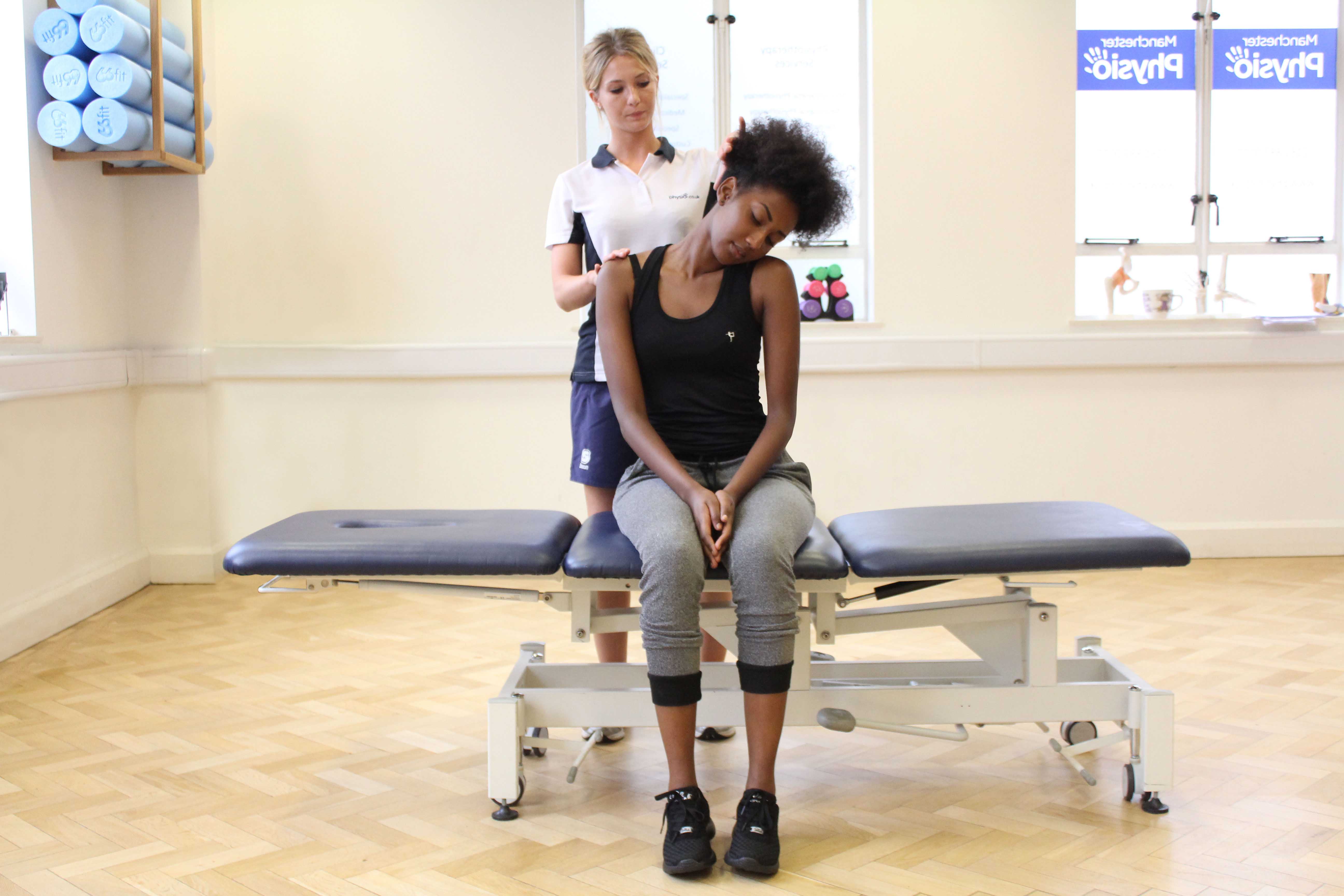Depending on the type of fracture and its location in the cervical spine will depend on the type of treatment. A minor compression fracture can be treated with a cervical brace (often called a halo brace) worn for 6 to 8 weeks to stabilise the spine until the bone heals. A more complex or extensive fracture may require:
- Traction – set of mechanisms for straightening fractured bones using either skin traction or skeletal traction.
- Open reduction, internal fixation using permanent rigid prosthesis e.g. rods, plates or screws. This includes C1-C2 screwfixation, occipitocervical plate fixation, and lateral-masslower cervical plating.
- Fusion of the vertebrae.
- Wiring techniques
 Above: Passive stretch of the trapezius muscle in the neck by experienced therapist
Above: Passive stretch of the trapezius muscle in the neck by experienced therapistTypes of unstable fractures include:
- Jeffersons – also known as a burst fracture of C1. About 50% of patients survive this injury without any lasting damage to the nerves.
- Flexion teardrop–most severe injury of the cervical spine resulting from severe flexion force causing compression of the spinal cord and often resulting in quadriplegia.
- Extension teardrop–hyperextension causing tearing away of the C2 vertebral body.
- Bilateral locked facets - is a relatively common unstable injury of the cervical spine. Severe neurologic deficit often is present due to marked narrowing of the spinal canal.
A fracture of the cervical spine can result in damage to the spinal cord causing muscle weakness, loss of sensation and reduced functional ability with everyday tasks. At Physio.co.uk, we offer physiotherapy for spinal cord injuries.
Physiotherapy after a cervical fracture fixation
Our physiotherapists at Physio.co.uk provide individualised treatment following a cervical fracture fixation. Your rehabilitation will depend on the type of surgery you received. Common symptoms that we treat following cervical fracture fixation include:
- Pain
- Swelling
- Reduced range of movement
- Loss of muscle strength
- Reduced ability with everyday activities
- Ice and ultrasoundto reduce pain and any swelling.
- Advice about certain positions of the spine – to increase comfort by relieving pressure off the affected areas while you are sleeping and sitting.
- Advice about certain types of movements – to increase your confidence when moving with less pain.
- Structured exercise programme tailored to your functional and sporting exercises
- Stretching exercises to improve flexibility of the neck and reduce pain.
- Active and passive range of movement exercises such as bending, straightening and rotating the neck to prevent soft tissue from shortening.
- Isometric strengthening of the neck muscles and the ‘core’ abdominal muscles
- Low impact aerobic exercises such as walking and stationary cycling
- Ergonomic assessment to assist the way you move at work or at home.
At Physio.co.uk we provide individualised physiotherapy treatment to optimise your potential with the activities important to you by improving your range of movement, muscle strength, general fitness and function. Your physiotherapist at Physio.co.uk will support and guide you through your rehabilitation programme to ensure that you are safe and confident at returning to normal activities.
Call Physio.co.uk now on 0330 088 7800 for more information or to book an appointment please contact us.

 0330 088 7800
0330 088 7800





































